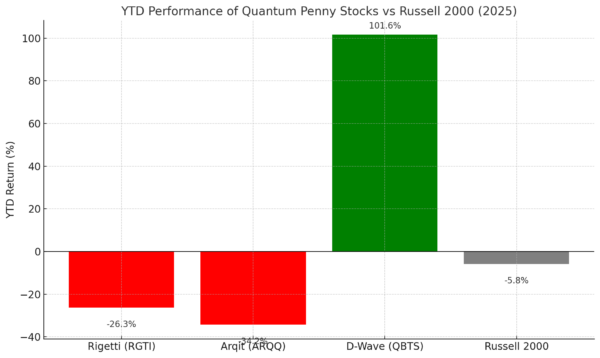Getting the Market Right: Marc Lichtenfeld Explains PDUFA Dates
Transcript:
Steve McDonald: Our guest this week is Marc Lichtenfeld, a biotech and pharma strategist. He’s here to talk about something that I think sounds like something that hides under your bed when you’re a child: a PDUFA.
Marc Lichtenfeld: Well, it does sound like a monster for some of the biotech executives.
SM: If you don’t eat your vegetables, the PDUFA will get you.
ML: Yeah, and you can see why it would be so scary for some pharma and biotech CEOs.
SM: Well the whole industry is scary as far as I’m concerned…
ML: Well, PDUFA stands for the Prescription Drug User Fee Act. And this is a law that was instituted in the early ‘90s that basically makes it so that the drug companies – the pharma and biotech companies – pay the FDA for it to review their drugs and decide on approval or rejection.
And this is important because there’s something called the PDUFA date. So when a company applies to get a drug approved, it is given a PDUFA date by the FDA, which is the date that it’ll either get the “yes” or “no” – approval or rejection of its drug.
So you’ll often see a company release that its PDUFA date is November 3, and you know that by that date, the FDA is going to rule. So if you’re the CEO of a biotech or pharma company, you’re sitting there at your computer waiting for that email to come in from the FDA saying “yes” or “no.”
SM: Now, is this after all the clinical trials?
ML: Right, yeah. So the company conducts all the clinical trials. Then it submits its application to the FDA with all the supporting data, and the FDA gives it the PDUFA date, at which point it will get that decision.
And it could come early.
SM: See, I thought the FDA monitored the clinical trials as they were going on.
ML: It does, and if something is going wrong, it’ll put a stop to it. Sometimes if things are going exceedingly well, it’ll actually –
SM: Fast-track it.
ML: Fast-track it. Or it could even stop a trial early to accelerate the application for approval.
But for most drugs that make it all the way through Phase 3 trials, the company will submit the application to the FDA – and sometimes it’ll do it even if the results weren’t great. It’ll just throw it at the wall and see if anything sticks, and the FDA will then make that ruling on or before the PDUFA date.
SM: Now, is the PDUFA date published? Can our Members see it somewhere so that they can say, “Well, on this date we’ll have a decision. I might buy it that day.”
ML: Yeah, the companies will usually release that date as well. On the FDA’s website you can find it. You’ll probably have to do a little bit of searching for it. But it is public information. Once the company has that date, it’ll usually release it and let everybody know that this is the date it’s expecting the FDA decision.
SM: Is this going to help anyone in making money on these stocks?
ML: It does. I mean, I don’t think you necessarily want to wait for that date to buy. Because very often – especially if it’s a small company – the stock is going to swing in a big way on approval or rejection… especially if the company doesn’t have a lot of drugs.
You know, if it’s a Bristol-Myers Squibb (NYSE: BMY) or a Pfizer (NYSE: PFE), it might not move the needle that much. If it’s a smaller biotech, it certainly could.
SM: Yeah, these small biotechs run 20%, 40%, 50%.
ML: Absolutely.
SM: It’s ridiculous.
ML: But you’d certainly want to be aware of when that date is. Because if you’re not prepared for that volatility – if that’s not something you are looking to participate in… If you’re just, let’s say, a trader trying to get in and out of these stocks, you certainly want to be aware that you have this major, major catalyst coming up.
And on the flip side, if you believe strongly in the drug, and you want to invest in the company because you think it’s going to be approved, and you want to participate in that upside, you also obviously want to know when that decision is coming.
SM: Is the PDUFA listed on… for example, investors’ news releases? Where would they find it on the website?
ML: Yeah, so they would find it… usually in a press release – sometimes in a transcript for an earnings call. In an earnings release, it’ll have all the financials and then it’ll say, “Looking forward to 2018. Our PDUFA date is February 3 for this particular drug.”
So you can usually find it in a press release, in a company’s presentation, on its website or, worst-case scenario, on a transcript.
SM: Is there a central location anywhere where all of them are listed? Sounds like something that would be very useful.
ML: Yeah… again, if you go to FDA.gov, it’s a little difficult to find.
SM: Everything on government websites is hard to find, not just the FDA’s.
ML: There is a free site that I’ve found that’s called biopharmcatalyst.com, and they’ll have PDUFA dates… and a lot of other things too. So you’ll have to kind of weed out some of the other things. But they have free listings of a lot of the big catalysts coming up for these companies.
SM: The PDUFA date. That’s fantastic. It sounds like something – if you’re into the biopharma industries, it’s something you would absolutely have to follow, isn’t it?
ML: Yeah, you must know these dates, especially in some of these smaller companies.
SM: And that’s it. Thank you so much again for coming in.
ML: My pleasure, thanks for having me.
About Steve McDonald
Somewhat of a renaissance man, Steve worked as a professional broker and has been an active trader of bonds for more than two decades, specializing in ultra-short-maturity corporate bonds. But before entering the investment industry, Steve was a naval aviator, flying fixed-and rotary-winged aircrafts, and also served as a surface warfare officer. Steve’s regular video series featured on Wealthy Retirement called “Slap in the Face” Award is some the most amusing investment content we republish.






